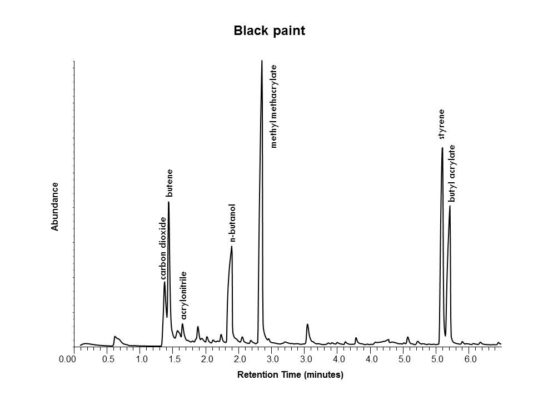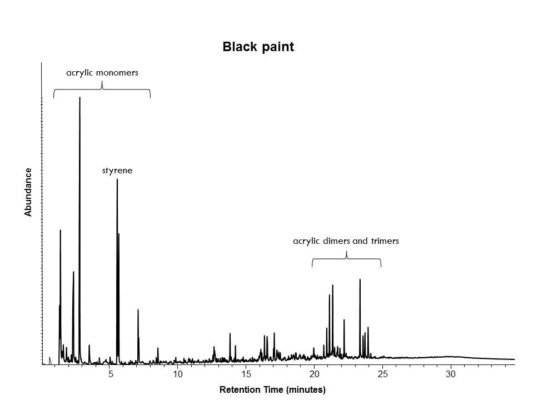Authenticating Drips
Jackson Pollock (1912−1956), a major figure in the Abstract Expressionist movement, was best known for the drip paintings he created between 1947 and 1950, when he lived near East Hampton, New York. By the early 2000s, his paintings were selling for millions of dollars, so perhaps it should have been no surprise when large numbers of previously unknown works began to appear on the art market.
Part of Pollock’s mythology was that he traded or gave away his work when he couldn’t pay his bills. Between 2005 and 2014, John Darren Re, a resident of East Hampton with some history of dealing in art, sold dozens of paintings purported to be by Pollock and Willem de Kooning. One of the largest victims of this fraud spent more than $800,000 on some sixty works of art. The buyer did not do this blindly; he was encouraged by several experts who considered the paintings to be credible.
Provenance
John Re claimed that he discovered a cache of Pollock’s paintings while renovating the basement of a Hamptons home whose previous owner, George Schulte, was a close friend of Pollock and his wife, Lee Krasner. Before acquiring the works, the purchaser spoke to several friends of the then-deceased Schulte. They confirmed that Schulte had owned a painting by de Kooning, and a neighbor claimed to have seen several rolled-up canvases in the Shulte basement. This seeming confirmation made Re’s purported provenance difficult to disregard. The International Foundation for Art Research (IFAR) later investigated and found no evidence that Pollock had any relationship with Schulte that would have resulted in the gift of so many paintings. Schulte’s close friends also confirmed that they had never seen works by Pollock in the basement.
Scientific Analysis
IFAR had the materials of some of the paintings in the large group analyzed by Fourier-transform infrared microspectroscopy (FTIR) and dispersive RAMAN microspectroscopy, which identified anomalies in some of the pigments and paint binders. Some of the materials would not have been available during Pollock’s lifetime.
Gas chromatography-mass spectrometry (GC-MS) was used to characterize the components of the black paint. This pyrolysis gas chromatogram shows the presence of acrylic-styrene-acrylonitrile (ASA) terpolymers, which have been commercially available only since 1970 and therefore postdate the lifetime of Jackson Pollock. Analysis of the green and white colors produced similar results.
Verdict
This case was investigated by the FBI’s Art Crime Team. In November 2014, John Re pleaded guilty to wire fraud and admitted that he “knowingly and fraudulently fabricated” the provenance for the large number of purported Pollocks. Re sold many of these works of art online and also admitted to fraudulently inflating the price by engaging in shill bidding (entering bids to artificially increase the price). Re was sentenced to four years in prison and agreed to forfeit $2,500,000, representing the proceeds of his sales of fraudulent art.
Bibliography
Fitzsimmons, Emma G. “Seller of Art Fakes Pleads Guilty to Wire Fraud.” New York Times, December 1, 2014. https://www.nytimes.com/2014/12/02/nyregion/seller-of-art-fakes-pleads-guilty-to-wire-fraud.html?_r=0
U.S. Attorney’s Office. “East Hampton Man Pleads Guilty in Manhattan Court to Fraudulent Sales of Purported Jackson and Willem de Kooning Artworks.” Federal Bureau of Investigation, December 1, 2014. https://www.fbi.gov/contact-us/field-offices/newyork/news/press-releases/east-hampton-man-pleads-guilty-inmanhattan-federal-court-to-fraudulent-sales-of-purported-jackson-pollock-and-willem-de-kooning-artworks



